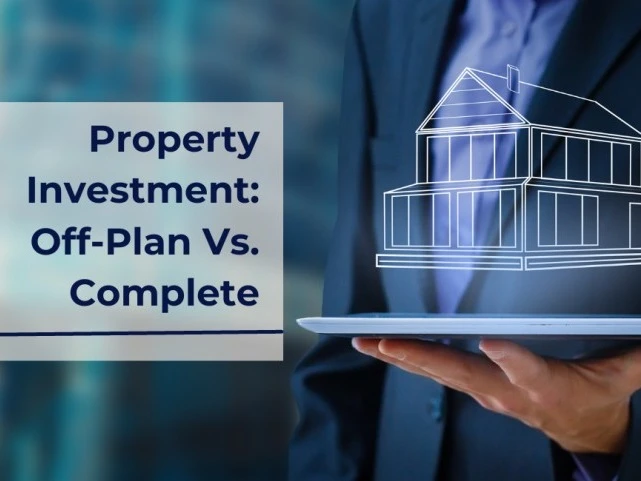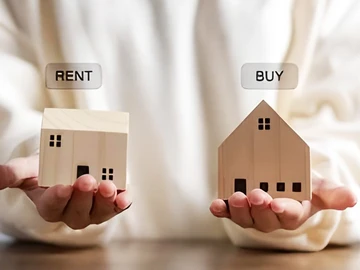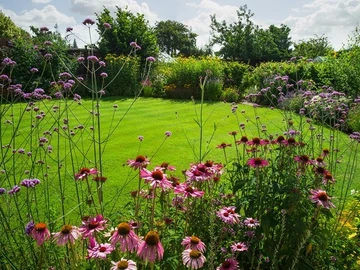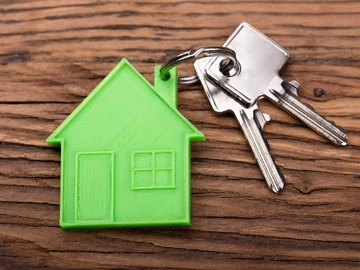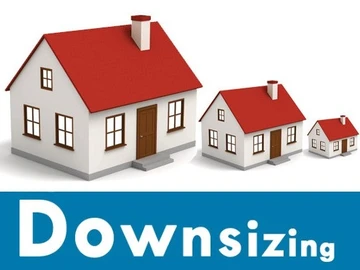When considering purchasing property in Zimbabwe, prospective buyers often face a choice between off-plan properties and secondary (or resale) properties. Both options come with distinct advantages and risks. Understanding these differences, especially in the context of the Zimbabwean market, is key to making an informed investment decision. Let’s explore both options, supported by real-world examples and statistics to guide your decision.
What is an Off-Plan Property?
Off-plan properties are those sold before or during the construction phase. Buyers purchase the property based on architectural plans, designs, and specifications rather than seeing a completed unit. These properties are typically marketed by developers looking to raise funds for construction.
What is a Secondary Property?
Secondary properties, or resale properties, are pre-owned homes or commercial spaces that have been previously lived in or used. When buying a secondary property, the buyer can physically inspect the property before purchase. These properties can range from newly renovated homes to older properties that require repairs.
Advantages of Off-Plan Properties in Zimbabwe
1. Lower Purchase Price: Off-plan properties in Zimbabwe often come with a lower initial purchase price compared to secondary properties. For example, a newly launched 2-bedroom off-plan unit in Harare’s developing suburb of Borrowdale might be priced at USD $50,000, while a similar secondary property in the area could cost upwards of USD $70,000, depending on the condition and location.
2. Capital Appreciation Potential: Off-plan properties typically experience substantial capital appreciation once completed. In areas such as Mount Pleasant and Eastlea in Harare, properties purchased off-plan have seen a price increase of up to 30% over a 3-year period. This trend is especially strong in areas undergoing urban development and infrastructural improvements.
3. Modern Amenities: Off-plan developments in Zimbabwe are often designed with contemporary amenities that appeal to a growing urban population. Developers frequently incorporate energy-efficient features, modern building materials, and smart home technology. For instance, properties in Harare’s Waterfalls area, such as the "Waterfalls Heights" development, feature solar-powered electricity systems, energy-efficient appliances, and high-speed internet.
4. Payment Flexibility: Many developers in Zimbabwe offer flexible payment plans for off-plan properties, making them more accessible to buyers who may not have the full purchase price upfront. For example, a developer in the Newlands area might offer a staggered payment plan over 24 months, with a 10% deposit required at the start, making the purchase process easier for prospective buyers.
Disadvantages of Off-Plan Properties in Zimbabwe
1. Risk of Delays or Non-Completion: Delays in construction are common in Zimbabwe’s real estate market due to factors such as material shortages, inflation, and project financing issues. For example, a development in Chisipite that was scheduled to be completed in 2022 has experienced delays and is now projected for completion in 2025. This can be frustrating for buyers who need to move in sooner.
2. Uncertainty of the Final Product: While developers provide detailed plans and artist renderings, the final product may not always match expectations. Changes in design, quality of finishes, or project scope can affect the value and livability of the property. For instance, a recent off-plan development in Ruwa had to revise its plans after buyers expressed dissatisfaction with the initial designs, leading to delays and changes in the overall layout.
3. Higher Risk for Developers: Some developers in Zimbabwe face financial challenges due to fluctuating market conditions, impacting the completion of projects. The recent economic instability, marked by hyperinflation and currency devaluation, has caused some developers to halt construction mid-project. As a result, buyers face the risk of not receiving the property they purchased.
Advantages of Secondary Properties in Zimbabwe
1. Immediate Occupancy or Rental Income: Secondary properties offer the advantage of immediate occupancy or rental income. For example, a well-located 3-bedroom house in Avondale, Harare, can be rented out immediately for USD $800 per month, providing an immediate income stream for investors. Off-plan properties, on the other hand, require years of waiting before they generate rental income.
2. Established Neighborhoods: Secondary properties are often found in mature, well-established neighborhoods with existing infrastructure, including roads, schools, and hospitals. For example, properties in the leafy suburbs of Greendale and Highlands in Harare are in high demand due to their proximity to amenities and established communities.
3. Less Risk: Secondary properties are tangible, allowing buyers to physically inspect the property before making a purchase. In contrast, off-plan properties carry the risk that the final result may not match expectations. For example, a secondary property in the Zimbabwean market allows the buyer to inspect the property's structural integrity, making it easier to assess any potential maintenance or renovation needs.
4. Potential for Negotiation: In many cases, buyers can negotiate the price of secondary properties, especially if the property needs repairs. For instance, a 2-bedroom house in Ruwa listed for USD $55,000 might be negotiable down to USD $50,000 if the property requires minor renovations, such as repainting or replacing the roof.
Disadvantages of Secondary Properties in Zimbabwe
1. Higher Purchase Price: Secondary properties, particularly in prime areas, can be significantly more expensive. In Harare, for example, a 3-bedroom house in a desirable area like Belvedere might cost over USD $90,000, while a comparable off-plan property in a developing area might be priced at USD $70,000.
2. Maintenance and Repairs: Older properties in Zimbabwe may require substantial investment in repairs and upkeep. A property built in the 1990s may need significant renovations to meet modern living standards. For instance, an old house in Mbare could require upgrading plumbing or electrical systems, which could add thousands of dollars to the overall cost.
3. Limited Customization: Unlike off-plan properties, secondary properties offer little room for customization. Once you purchase a secondary property, you're limited by the existing layout and features unless you're willing to invest in significant renovations.
4. Depreciation Risk: While newer properties tend to appreciate over time, older properties may face depreciation due to wear and tear or changes in the surrounding environment. Properties in rapidly developing areas might face depreciation if they’re surrounded by new construction or if the neighborhood becomes less desirable.
Key Considerations When Choosing Between Off-Plan and Secondary Properties
1. Your Timeline: If you need a home immediately, a secondary property may be your best option. For example, if you're looking to relocate to Zimbabwe and need to move within the next six months, a secondary property in an established neighborhood will save you the long wait associated with off-plan purchases.
2. Budget and Financing: Off-plan properties tend to be more affordable upfront, but secondary properties offer immediate possession and may not require financing plans as complicated as off-plan purchases. However, secondary properties may require higher initial outlay or mortgage approval.
3. Risk Tolerance: Off-plan properties carry greater risk due to potential delays or changes in the development. Buyers with a higher risk tolerance might benefit from the potential for capital appreciation, while those seeking a safer, more immediate investment might prefer secondary properties.
4. Condition of the Property: Older secondary properties may require costly maintenance, while off-plan properties come with the benefit of being newly built with modern materials and systems. For example, off-plan properties in Newlands or Mount Pleasant might offer newer infrastructure with lower initial maintenance costs.
Conclusion: Which Should You Buy?
The decision between off-plan and secondary properties depends on your financial goals, risk tolerance, and time frame. Off-plan properties in Zimbabwe, particularly in up-and-coming areas, offer the potential for higher returns and customization, but come with risks such as delays and uncertain completion. On the other hand, secondary properties are ideal for those seeking immediate occupancy or rental income, with the added benefit of being able to inspect the property before purchase.
In Zimbabwe, the demand for both off-plan and secondary properties continues to rise as the country’s real estate market grows and modernizes. Whether you opt for a shiny new off-plan development or a well-established resale property, understanding your needs and preferences will help you make a decision that aligns with your long-term investment strategy.
 Continue with Facebook
Continue with Facebook
 Continue with Email
Continue with Email

